Related articles
-
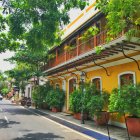 If You are Planning a Trip to Pondicherry in 2020, These are the Places to Visit for Foodies, Beach Bums and Shopaholics!
If You are Planning a Trip to Pondicherry in 2020, These are the Places to Visit for Foodies, Beach Bums and Shopaholics!
-
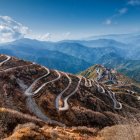 Take a Cool Break This Summer as BP-Guide Brings You the 10 Coolest and Most Mesmerizing Places to Visit in India in the Summers (2019)
Take a Cool Break This Summer as BP-Guide Brings You the 10 Coolest and Most Mesmerizing Places to Visit in India in the Summers (2019)
-
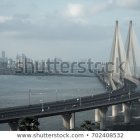 10 Best Restaurants in Bandra: from Fine Dining to Hipster Cafes and Budget Eats, These are the Places You Absolutely Need to Eat At in 2019!
10 Best Restaurants in Bandra: from Fine Dining to Hipster Cafes and Budget Eats, These are the Places You Absolutely Need to Eat At in 2019!
Namibia: One of the Beauties of Africa
Namibia can easily be tagged as a nation created for the creator's expression of beauty. This country, located in the beautiful southern region of Africa, has majorly, uninhabited, enormous desert space, which is a reasonable explanation for its low density.
Namibia is a beautiful, natural masterpiece, one of the most famous tourist attractions in Africa with beautiful sites such as the colourful and well-developed capital city of Windhoek down to the epic settings in the natural provinces of Sossusvlei. Namibia is home to a host of impressive citizens known for their friendliness, attractive and sumptuous meals, music and other arts. Namibia is a peaceful nation rich in history and wildlife of which are some of the rarest animals and vegetation, known to humankind.
3 Major Things to Keep in Mind Before Visiting Namibia
1. Namibia Is Immensely Vast
2. Namibia Is the Perfect Location for Road Trips
3. Namibia Is One of the Least Densely Populated Nations
10 Must-Visit Places in Namibia
1. Windhoek
As we have identified Namibia as one of the most beautiful places in Africa, it is well expected that Windhoek, as the capital of Namibia will be a beauty to long for. Amidst all the cities of Namibia; Windhoek very well represents Namibia with a well-planned space. Windhoek is the largest city in Namibia, exceptionally surrounded by four mountain ranges. This city is known to be a welcome point for most visitors and tourists coming to Namibia with well-organised options of hotels and resorts for decent accommodation.
Windhoek is a fun place with the presence of exquisite locations fit for academic tourists and a perfect place for a couples' treat, some of the attractions include:
- Daan Viljoen Game Reserve: Who said we can't start the safari from within the city.
- National Botanical Garden: Imagine a romantic evening on a 12 acre garden with endless beauty; should you need an indelible moment with your partner or an accomplice or even alone, this is the spot you're looking for!.
- National Craft Centre: The location for your hand made ornaments, some of which are even made with ostrich eggshells. Thinking of getting a souvenir? This is the place for you..
- Independence Memorial Museum: History students and archeologists in search of academic answers will definitely find this place a fulfillment of their desire; this museum contains antiques which tells stories of the apartheid.
2. Etosha National Park
This is a self-acclaimed best wildlife park in Namibia. Unlike other parks where animals are trailed for long periods to locate them, the Etosha park has a positively strange essence for bringing the animals right to where you are - water holes. The fashion of creating water holes around makes it easy to see the animals, especially during a dry season as these wide varieties of animals come out in hundreds when they are desperately looking to quench their thirsts. The Etosha National Park covers approximately 20,000 sq. km and has a wide range of animals. Ensure your cameras are fully charged with extra batteries, there will be a lot to capture!
3. Walvis Bay
The Walvis Bay is an Afrikaans language interpretation of 'Whales Bay' which a small coastal city in Namibia. The Walvis Bay is an exciting place with a lot of history including the intention of South Africa to keep the Bay due to its large port and fishery activities on it, but Walvis Bay became part of Namibia four years after independence. A trip down the history of the Walvis Bay gives insight into the segregation of three significant components with each claiming a different and independent city centre. This Bay is a beautiful fishing spot and the largest port in Namibia with a host of fun things to do like mountain hiking, relaxing dinner at the Raft Restaurant, and experience the tranquillity of the Owambo beach.
4. Namib-Naukluft Park
Naukluft Park is the oldest desert in the world, and it is formed by four regions, namely Namib, Sossusvlei, Sandwich Harbour, and Naukluft. This is the largest protected area in Namibia with an area of 49,800 sq km; the Namib-Naukluft Park is the largest game park in Africa and the fourth largest park in the world.
This park is home to some of the rarest plants and animal species. Some of the endemic flora and fauna include Hartmann’s mountain Zebra, Acacia (thorn), Welwitschia Mirabilis, Commiphora, Aloe Karabergensis, Euphorbia, Cluster Fig, Aloe sladeniana; these rare species of vegetation and animals make this park a must visit for zoologists, and biologists interested in casting their eyes on the park.
The wildlife and the scenery of the vegetation make the park a fantastic site for a safari with the host of many wildlife animals such as over 200 known bird species, rock dassie, klipspringer, mountain zebra, dassie rats, steenbok, springbok, chacma baboon, Oryx, and kudu. This place is a haven for wildlife photographers.
5. Sossusvlei
There are several attractions in the Sossusvlei for tourists, a great photographic site which offers beautiful views of sunsets and sunrises. Sossusvlei means dead end marsh and is characterised by red dunes surrounded with white salt and clay pan.
The dunes in this part of the world are known to be among the highest with almost 400 meters in height. Photographic scenes are best during the rainy season when Tsauchab River is full enough to flow into the pans creating a glassy feature which holds the reflection of the dunes in sight. This particular location is harsh with intense sunshine during the midday and is advised to be spent in shelters and explored only in the early hours or when dusk is about to set in.
Several attractions here are easily accessible, leaving only the last point a bit above 5 kilometers to be travelled in a personally owned ranger or a shuttle.
6. Skeleton Coast Park
The skeleton coast was the name given to the entire Namibian coast as a region with many shipwrecks and a meeting point between the ocean and the desert. This spectacularly harsh shore was once tagged 'the place God made in anger' by the Bushmen (The San).
This location creates a mysterious scene with the meeting point of the desert and the ocean being covered continuously in fog which is the result of contrasting temperature between the heat of the desert and the cold breeze from the ocean. It is safer to visit this park at a time within the dry season when the fog has cleared out a bit, but for the most adventurous mind, a scene of thick fog can add to one’s list of mysterious adventures.
7. Damaraland
Named after the Damara people who occupy this region, Damaraland is now a name reserved for the tourist circle, as this region has been renamed to from Kunene region on the northern part and the southern part likewise renamed as Erongo region. Damaraland due to its epic and untamed features has been one of the most scenic areas in Namibia, the site which includes water gorges, desert land space, grassland, and massive granite koppies.
Wildlife including springbok, black rhinos, and desert elephants survive in this part of the world, making it an essential feature where these animals have to travel several kilometers per day in search of food and water. Top Damaraland features include Brandberg, Namibia’s highest mountain and location of the famous, white lady painting by the Bushmen; the Petrified Forest, an old forest site and finally the Vingerklip, a finger-like build-up of 35 m high limestone.
8. Caprivi
Caprivi is the ultra-narrow strip which separates Botswana and Angola running 280 miles west to east from Namibia to Zambezi River.
Caprivi used to be a forbidden zone and strictly off limits to safari seekers at the time of border war in the region. It is one of the many historical sites in Namibia with exceptional protection for the wildlife in the area to make up for the loss during war times.
9. Fish River Canyon
The largest Canyon in Africa is located in the southern part of Namibia, and this sizeable natural site is about 150 km long and 27 km wide. This beautiful site is the second most visited tourist location in Namibia. The running trail was first documented in 1990 and Ultra Canyon Marathon has over the years been a significant sports tourism attraction as hikers and travel enthusiasts attempt to cover the entire canyon to beat the last set record which is currently held by AJ Calitz of South Africa who covered it in 6 hours, 39 minutes and 52 seconds.
10. Spitzkoppe Rocks
It remains a fantastic site for hiking, tranquillity, site seeing, bushman painting, amazing horizons, and unending rock formation for photography. Spitzkoppe, which means sharp head was a name inspired by a sharp peak of the inselberg on this site. Spitzkoppe is a remnant from an ancient volcanic eruption and was first climbed in 1946 and has been a major tourist attraction to climbers since, which is a challenging adventure to professional mountain climbers.
Being a tourist attraction and one of the highlighted areas to visit, Spitzkoppe has paintings in caves and ravines by the bushmen with the most famous being a painting of 'the white woman'. The depiction of a human with long bright hair colour and a white painting indicates that it is not an image of African descent, this painting drives right through the heart of the Namibians' (bushmen) first encounter with the whites.
Highlights of Namibia
1. Delicious Meals
When it comes to meals in Namibia, there are a lot of unique dishes peculiar to the Namibians and southern African countries. Everyday dishes are believed to be able to sustain tourists and foreigners from various countries who may not be able to live on their local dishes for more extended periods of stay. The top Namibian dishes are:
- Wild games: Cooked in a variety of ways but majorly as a barbecue, wild game is a common dish offered to tourist to give an indelible experience of Namibia with variety of wild including crocodiles, springbok, and giraffe amongst many others. Mopane worm which is a dish reserved for tourist who may dare to try out something entirely new.
- Biltong: An aromatic air-dried meat which originated from southern Africa is now a popular everyday meal in Namibia, it is commonly made from beef and is mostly preferred and made with springbok.
- Potjiekos: This dish takes an amazing 3-4 hours to cook, Potjiekos which is a mixture of vegetables and red meat or chicken is a South African dish which finds its origin from as far as Germany and Netherlands. It is cooked in a 3-legged iron pot. Potjiekos is a meal which can also be enjoyed by vegetarians who would prefer their own Potjiekos prepared without meat of any kind but only vegetables.
- Kapana: It's red meat barbecued in open air and sold in the market.
2. Friendly citizens
The reason why this is a concern to anyone is the need to know how safe a place is to visit; no one ever wants to visit a location full of hostile people or people with corrupt practices. While no country in the world can particularly claim to be crime free, Namibia also had its share of the reports of gang violence which may only result in petty crimes but rest assured, Namibia is one of the safest and one of the most politically stable places in Africa. With Namibia starting to become a tourist attraction over the years, the citizens of Namibia have grown quite used to having foreigners around and being friendly to them with the understanding of such being an opportunity for networking as well as inviting investors in the form of tourists who would only help them flourish.
3. Quiet Mornings
Sometimes in our lives, we want to be away from all the noises, noise from the environment, noise even in our heads. The tranquillity of Namibia is a strong point, which makes it one of the best places to be considered for a holiday.
Owing to the density of Namibia, there’s enough space to ensure the activities of inhabitants of a particular location do not interfere, or in any way, disturb others. The truth is, academicians have shown a particular interest in Namibia for peace as it offers the required quietness expected for full concentration on their academic affairs.
Related articles
-
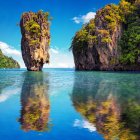 Feeling Jaded and Worn of Late? Perhaps it's Time to Rediscover the Most Beautiful Places in India: 10 Destinations That Will Refresh and Rejuvenate You
Feeling Jaded and Worn of Late? Perhaps it's Time to Rediscover the Most Beautiful Places in India: 10 Destinations That Will Refresh and Rejuvenate You
-
 Looking for the Best Bags for Backpackers? Our Top Picks are the Best Contenders on the Market at the Moment (2020)
Looking for the Best Bags for Backpackers? Our Top Picks are the Best Contenders on the Market at the Moment (2020)
-
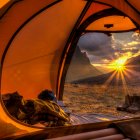 Planning for an Outdoor Camping Expedition with Your Family and Friends? Here We Have Come Up with 10 Best Top-Notch Camping Tent, Which is Going to Help You Rest Comfortably Amid the Woods (2020)
Planning for an Outdoor Camping Expedition with Your Family and Friends? Here We Have Come Up with 10 Best Top-Notch Camping Tent, Which is Going to Help You Rest Comfortably Amid the Woods (2020)
-
 Everything You Need to Know About Packing Smart(2021): 10 Best Travel Bags for Women and Other Useful Tips
Everything You Need to Know About Packing Smart(2021): 10 Best Travel Bags for Women and Other Useful Tips
-
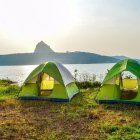 Looking for Something Thrilling to Do on This Weekend? 10 Camping Sites Near Pune for a Wonderful Getaway.
Looking for Something Thrilling to Do on This Weekend? 10 Camping Sites Near Pune for a Wonderful Getaway.
Experience the True African Culture
Don't just stay confined to your hotel room! Go out there and experience a completely different world by visiting tribal villages. You would be astonished to see their ways of living, their culture, and how they carry out their day-to-day chores. You'll be taking the experience with yourself to cherish forever!